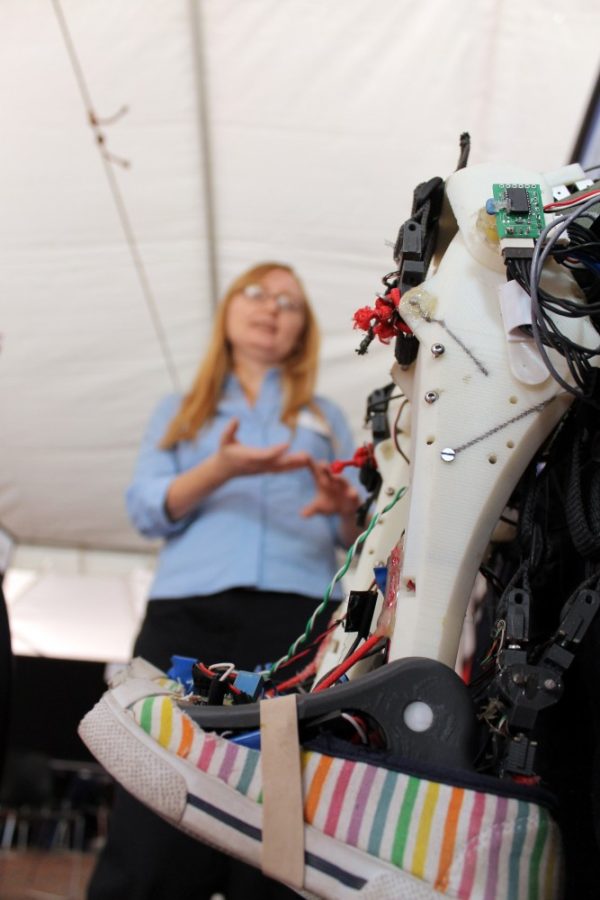The GPSC hosted its 19th annual Student Showcase on Friday to creatively present research from graduate and undergraduate students.
About 105 students showed their research at the event, with graduate students making up about 55 percent and undergraduates 45 percent, according to Chris Cornelison, events director of the Graduate and Professional Student Council. Cash prizes were awarded to showcase winners, and judges examined their information based on the quality of their presentation, its academic merit, value to the community and overall impression.
Cornelison said the council hosts the event because it allows students the opportunity to present their personal research in a creative light.
“It (the showcase) combines everything — the Tucson community, the university community, staff and faculty,” he said.
Prize money for showcase winners was donated by the UA Libraries, BIO5 Institute, the Southern Arizona section of the American Chemical Society and the University of Arizona Peace Corps Coverdell Fellows program. The GPSC also hosted a silent auction during the showcase for the first time to generate additional funds for the council, said Rachel Leffall, development administrator for GPSC.
Showcased projects ranged from “the perceived exertion of a daily path on a UA bicycle tour” to “Ashes to Ashes, Dust to Dust: Decomposition in the Desert.”
Theresa Klein, an electrical and computer engineering graduate student, explained through her research how human walking patterns can be shown in robots. In order to do so, she built her own robot and studied how the outside environment can give positive or negative feedback to the human nervous system. Klein found that humans make use of gravity to swing their limbs, and that there was a “good match” between a human hip and a robot hip because they move similarly. Movement in the ankle, however, was different because the robot’s stance extended “much sooner” than a human’s would.
“Studying the nervous system in a physical body helped me understand the biomechanics in natural human walking,” Klein said.
Other graduate students, like Michael Kotutwa Johnson who is working on his degree in American Indian studies, explained how culture supports sustainability. Johnson presented corn heirlooms that were passed down from generation to generation to show how values govern agriculture, not just science alone. Johnson is from the Hopi Reservation, which he said only receives 6 to 10 inches of rain per year. He said this is why farming principles, such as respecting all life, working hard and being humble, are vital to his community’s success.
“This is not just about growing vegetables,” Johnson added. “This is about growing our kids.”
Judges included faculty, community members and volunteers with expertise in one of the 12 specific categories. Projects fell into categories like engineering, social sciences and law, public health and education, among others.
Marielle Smith’s presentation fell into the biological sciences category, because she explained how carbon accumulates in secondary forests and plantations in the tropics. Smith, a graduate student studying ecology and evolutionary biology, said she spent months researching how carbon affects climate change and how we could generate more carbon in abandoned and disturbed lands. She found that if more plantation forests were established, they could naturally make more carbon with less time and money. Smith said she was a bit weary of her findings, because she does not just want policy makers to make more plantation forests, but to see how they can spur biodiversity in current lands.
“There is still a lot of biodiversity in natural forest areas,” she said. “Looking at just carbon alone could be detrimental.”
Winners were formally announced at an awards ceremony on Friday.









